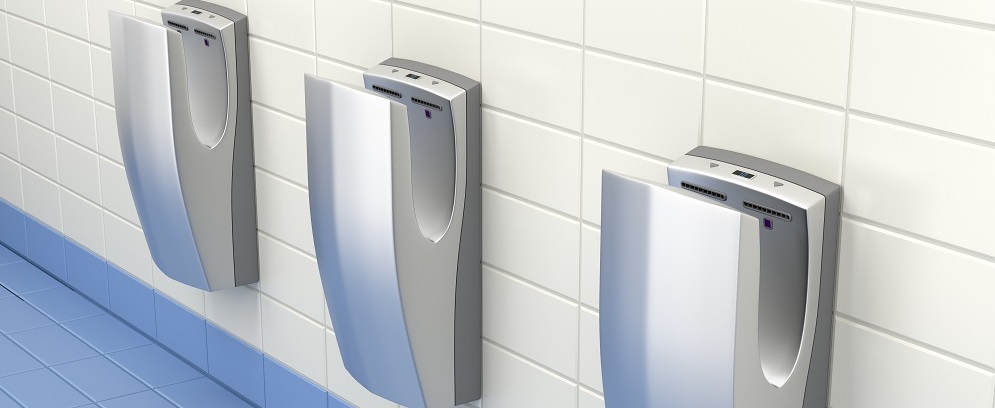The Hidden Dangers of Hand Drying
- #Washrooms
Much has been made of washing hands in the last twelve months but what about drying?
What if we told you the hand dryers below could actually increase the spread of virus particles? Dispersing particles into the air up to 3m distance and for a minimum of fifteen minutes after the drying process has stopped?

There are easy ways to overcome this problem though, but the first step is understanding it.
Although significant scientific research has been carried out in this area, with published and peer reviewed papers, the findings seem to remain within the realms of science, health and academia.
We think this needs to change.
In 2015, Keith Redway, Emeritus Fellow of Biomedical Sciences at the University of Westminster studied three different drying methods to compare the dispersal levels of virus particles. These were paper towel drying, warm air hand dryers and jet hand dryers.
A harmless virus was created that would have behaved the same as a normal virus.
The study used the three different methods of drying to compare the following:
The paper towel method dispersed minimal particles. The warm air dryer dispersed more particles but, as the air blows downwards, it faired significantly better than the jet hand dryer which produced some alarming results.
The jet hand dryer dispersed a high volume of virus particles at a range of heights with the highest numbers between 0.6 and 1.2 metres – child height.
The jet hand dryer dispersed the virus up to 3 metres distance.
Virus was detected in the air up to 15 minutes after using the jet hand dryer.
Two key points.
Therefore, any virus particles remaining on hands after washing – and there will be some - will be ejected into the air at 400 mph and remain in the air for at least 15 minutes, with a minimum coverage of 3 metres that is concentrated at child height.
Sobering thought.
Anyone using a jet hand dryer is at risk of spreading infection to themselves, other users of the washroom and onto surfaces inside and beyond the washroom.
This is made even more concerning by a recent paper in The Journal of Hospital Infection which stated that infection with Covid-19 is equally or more likely to be via the air than through surface contact.
This isn’t the users fault or the establishment that installed them. Jet air dryers were considered efficient and hygienic because you didn’t have to touch them (often you do).
The studies recommend that jet hand dryers are unsuitable for settings where infection risks are paramount – healthcare, hospitals, clinics, care homes, food preparation areas, schools etc.
Things have changed since 2015 though and isn’t every area now at risk of infection?
According to the science the most hygiene method of drying is with paper. And, there are many dispensing systems that improve hygiene by ensuring the user only touches the paper they are using and nothing else.